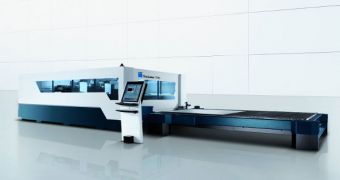A German company is currently using the same type of material that is flying through space aboard a robotic probe to improve the accuracy of laser cutter devices used in the manufacturing of various tools and components.
The Braunschweig-based company, called Schütze, is using a type of ultra-light carbon fiber that has been developed by the European Space Agency (ESA) for the Rosetta spacecraft.
Some of the main advantages this material has over others – such as steel – is that it's about 600 percent lighter, but also 50 percent stronger. This made it the perfect choice for constructing the legs of the lander on the Rosetta probe.
The mission features an orbiter that will drop a lander on the surface of the comet Churyumov–Gerasimenko in 2014. The lander will use its carbon fiber legs to attach itself to the comet firmly.
“No mold is necessary, making the production of tailored rod dimensions feasible. The carbon fiber sandwich rods combine high strength and stiffness with very low weight,” says company director Rainer Schütze.
These rods are made up of a very rigid and lightweight foam core, which is then wrapped in the new carbon fiber. Fiber glass is also then added, to improve strength and stiffness, ESA experts report.
Employing the space-oriented technology on more down-to-Earth applications is possible through the ESA Technology Transfer Program. Germany-based MST Aerospace is the space agency's primary technology broker for the private sector.
Schütze was put into contact with machine tool manufacturer Trumpf Sachsen, which was interested in the technology. “Probably the cooperation would not have taken place without MST making the connection,” Mr Schütze says.
The carbon fiber rods were used at Trumpf Sachsen as the basis for company's precise laser cutter devices. These are large, 620-kilograms ensembles that feature two cutting heads mounted on a rod.
Until now, it was difficult to accelerate and decelerate the entire construct, due to the fact that there were concerns about how long steel would endure such a treatment. But now the beam supporting the laser heads is made of the new carbon fiber material.

 14 DAY TRIAL //
14 DAY TRIAL //